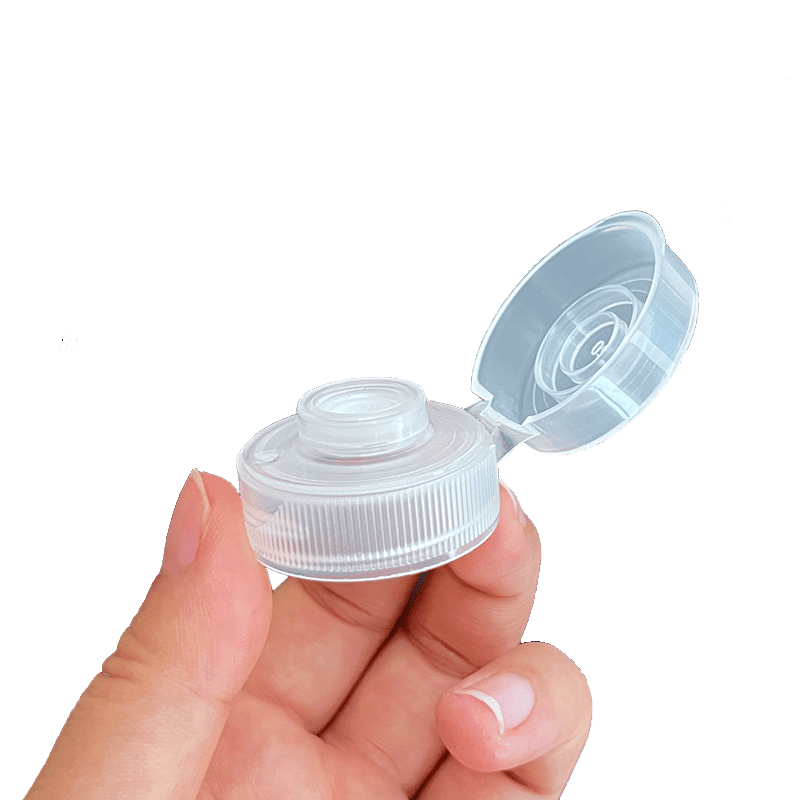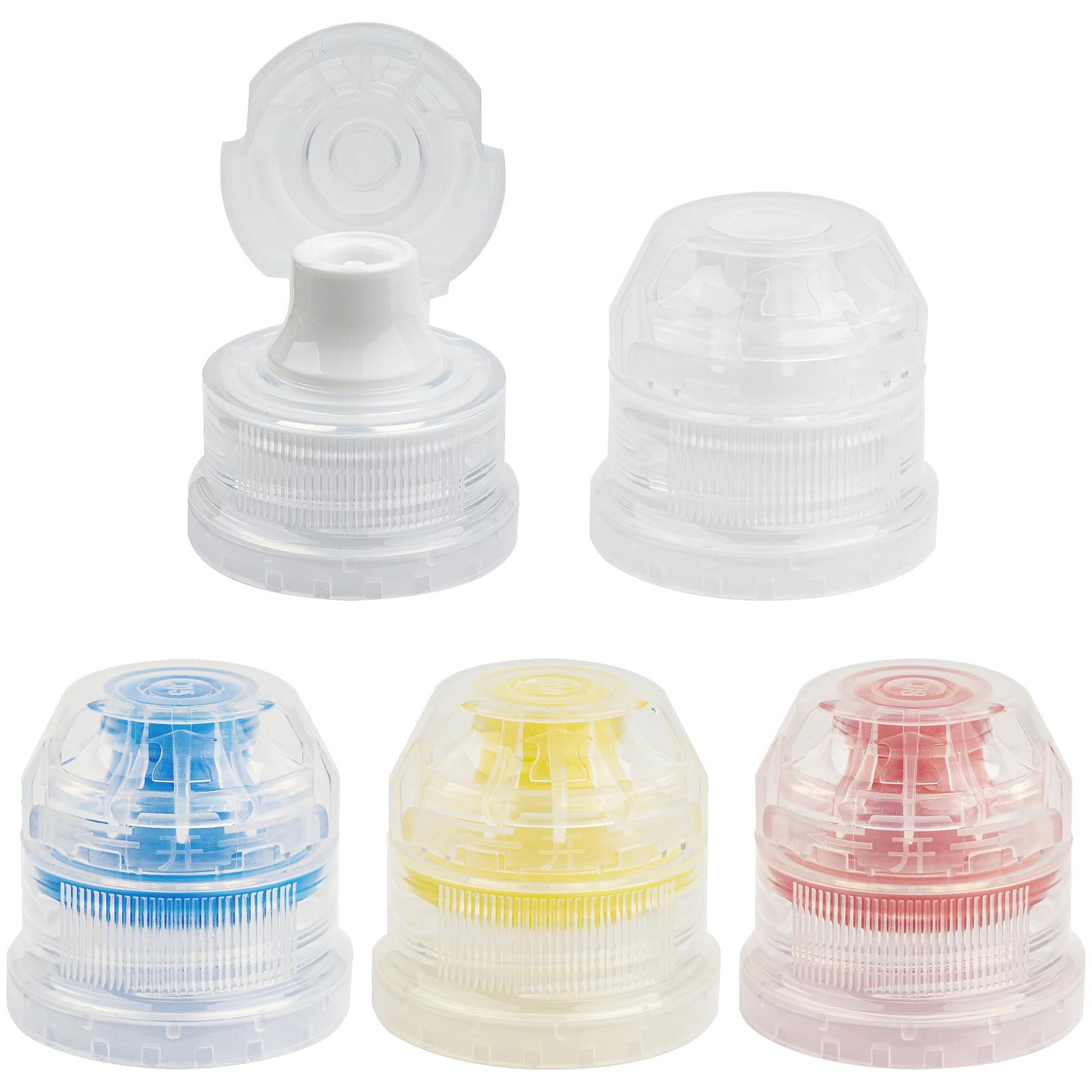

水漏れしないスポーツボトルのキャップを設計する方法:エンジニアの洞察
真の意味での 防漏キャップ それは、運動中やハイキング中、旅行中にこぼれた液体を処理するユーザーにとって現実的な問題だからです。このガイドでは、完璧なスポーツボトルの背後にある工学的戦略について解説する。 防漏キャップ特に フリップトップキャップ などの技術がある。 フリップ・トップ・キャップ 20/410, 24/410そして 28/410.などの要素がどのように作用するのかも探っていく。 シリコンバルブ, ヒンジデザインそして右 フリップトップキャップ金型 はデザインを左右する。
水漏れ防止キャップが思った以上に重要な理由
ジムバッグに水が垂れたり、書類がびしょびしょになったりするのを好む人はいない。A 防漏キャップ はその悪夢を解決する。アスリートにとっても通勤者にとっても、シーリングの信頼性は美しさよりも優先される。 フリップトップ・キャップ特に精密なヒンジとタイトな金型は、堅実な出発点を提供するが、慎重な設計作業が必要である。
フリップトップ・キャップのデザインは素材選びから始まる
エンジニアは通常、ポリプロピレンかHDPEを使用する。 フリップ・トップ・キャップ・プラスチック・ボトル 市場。しかし、プラスチックだけではボトルを密閉することはできない。内部構造、例えば シリコンバルブ付きフリップトップ・キャップシリコーンが力仕事をします。シリコーンは柔軟で密閉性が高く、圧力に順応し、ひび割れや経年劣化を起こしません。
フィット感が重要:適切なネックサイズ-20/410、24/410、28/410を選ぶ
A フリップ・トップ・キャップ 20/410 は狭いボトルネックに適合する。A フリップ・トップ・キャップ 24/410 はミディアムプロファイルのお供だ。 フリップトップ・キャップ 28/410 より頑丈なボトルに適合します。サイズの不一致はシール不良につながる。さらに悪いことに、圧力がかかったり動いたりすると漏れてしまいます。漏れのないデザインは、キャップとボトルの首がぴったり合うことから始まります。
フリップトップキャップヒンジデザイン:隠れたヒーロー
ヒンジ フリップトップキャップ は単に開閉するだけではない。片手でどれだけ簡単にボトルを密閉できるかを左右する。しかし、それ以上に重要なのは、キャップを閉めるときのテンションに影響するということです。蝶番が弱いと?それこそ、ドリブルの元です。
タイトかつフレキシブル フリップトップキャップヒンジデザイン は蓋をバルブと同じ高さに保ちます。エンジニアは、寿命を延ばし、疲労に耐えるために、リビングヒンジの厚みを微調整したり、リブで補強したりすることが多い。
3Dプロトタイプを使うプレテスト用フリップトップ・キャップ3Dモデル
高価な金型を導入する前に、エンジニアはすべてのシミュレーションを行う。 フリップトップ・キャップ 3Dモデル.適切なモデルを使用すれば、ストレスポイント、ヒンジの挙動、バルブの圧縮、シール圧力をテストすることができます。ここで発見されたミスは、生産現場で後で発見されるよりも安上がりです。
高度なリーク防止:シリコンバルブとダブルシール
を追加する。 シリコンバルブ付きフリップトップ・キャップ がゲームを変えます。このバルブは、絞る時や飲む時に液体を逃がすためにわずかにたわみますが、通常の状態では締まったままです。キャップの内側にあるダブルシールリッジと組み合わせれば、ロックダウン・シールが完成する。
これらのシステムは、スムージー、プロテインシェイク、炭酸水用のボトルで特に威力を発揮する。圧力管理は、多くの人が考えている以上に重要である。

金型から量産まで:フリップトップ・キャップ金型の要点
デザイン フリップトップキャップ金型 または フリップトップキャップ金型デザイン が最終的な品質を形作ります。ミスアラインメント、収縮の問題、不十分なフロー設計は、アライメントやシールができないキャップを生み出します。ここでは精度が重要です。
マルチキャビティ金型を使用することで、より高い一貫性が得られる
空気の滞留を防ぐための換気を含む
脱型を容易にするため、わずかな抜き勾配をつける。
金型が悪いとキャップがゆがむ。ゆがんだキャップは漏れる。ここで手を抜いてはいけない。
フリップトップキャップクロージングマシン:カウントする自動化
射出成形の後、キャップは組み立てられて、ボトルにはめ込まれる。 フリップトップキャップ閉鎖機.この機械は、キャップの歪みを避けるために均等な力で押さなければならない。ズレ?その結果、ボトルが誰かのジムのロッカーで逆さまになるまで、誰にも気づかれることなく小さな漏れが生じます。
機械はヒンジとバルブの位置も完璧に合わせなければならない。この段階での人為的なミスが、バッチ全体を台無しにしてしまうのです。
フリップトップ式ディスペンサーキャップの市場動向と需要
について フリップトップ分注キャップ市場 は急速に成長する。消費者は利便性を求めるが、漏れを犠牲にしてはならない。エコ・パッケージはまた、リサイクル可能な容器など、ミニマムだが機能的なデザインへと業界をシフトさせている。 フリップトップ・キャップとクロージャー.現在では、交換可能なシリコンインサートや交換可能なシールを備えたデザインを求めるブランドが増えている。
賢明なブランドは、CADへのアクセスを提供するメーカーと協力している。 フリップトップ・キャップ 3Dモデル また、プロトタイプの金型製作を短納期で行うことができます。
防漏キャップのテスト-ただ振るだけではない
振動試験だけでは全容はわからない。エンジニアは使う:
圧力チャンバー試験
逆漏れシミュレーション
1.5メートルからの落下テスト
ストレス下での長期シール保持
雨漏り防止は今日だけの問題ではない。
結論理想的な防漏キャップを設計するために必要なこと
A 防漏キャップ 魔法ではない。スマート・エンジニアリングなのだ。正しい フリップ・トップ・キャップ 24/410 または 28/410 フィットを加える。 シリコンバルブ 柔軟性と圧力コントロールのためにヒンジは、やめないものを選びましょう。テストは 3Dモデル.を確認してください。 キャップモールド また、低級品で組み立てをケチってはならない。 クロージングマシン.
これらすべてを正しく行うことで、顧客は二度とキャップのことを考えなくなる。
お客様の声



簡単なまとめ防漏キャップのエンジニアリングの優先順位
ネックサイズを正確に合わせる(20/410、24/410、28/410)
食品用シリコンバルブを使用し、適応性の高いシールを実現
張力を維持する信頼性の高いヒンジを設計
3Dモデルによる早期プロトタイプ
精密な金型と組立機械への投資
理論上の圧力だけでなく、実際の性能をテストする



1件のフィードバック